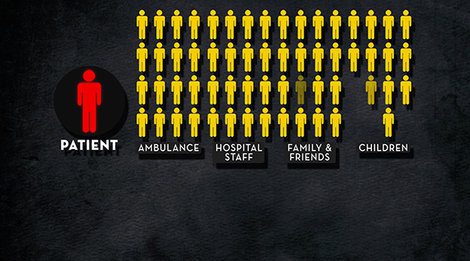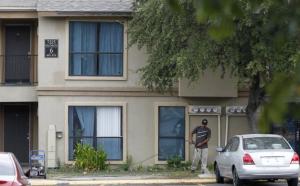Swing and a Miss: A man traveling from Liberia came into Dallas on the 20th of September, apparently healthy. Five days later he presented at the Texas Health Presbyterian Hospital Dallas with flu-like symptoms and after informing the hospital of his recent West Africa travel, he was sent home – symptomatic and capable of spreading the Ebola virus to anyone who was in physical contact with him. On the 29th, he arrived at the hospital by ambulance and this time he was isolated. He tested positive for the Ebola virus and now is critically ill. In a now-familiar speech, Dr. Tom Frieden, head of he CDC, assured everyone that he was sure they would be be able to control any outbreak here in the US. CDC has made some serious errors lately with containing deadly pathogens (Anthrax), discovering unknown store of Smallpox, and even how to manage the hazardous waste that piled up in Emory Hospital as the two healthcare workers were brought in to the country to treat their disease, demonstrating that despite all assurances, even the best hospitals run into unforeseen complications that require special equipment and guidance. Our country seems to have real challenges when it comes to estimating the impact of wars, natural disasters and other essentially uncontrollable events, while simultaneously overestimating our capabilities to control them. This is the fundamental problem with All Hazards events.
From the decision to bring Ebola into the country, the slow response and lack of action and the decision to take the lead internationally, we have been following the West African epidemic closely. Eight months in, best estimates are 6,500 diagnosed, 3,500 dead, and only a few hundred adequate beds to cover the whole of West Africa, the disease continues to multiply, and now we rely on CDC to uncover the chain of infection and isolate the individuals this patient contacted during his week long infectious period. It is time for some serious action on he part of Customs and Immigration on this issue.
As of the publishing of this post, (October 1st) it is now being reported by USA Today that a second person is being monitored as a potential patient.
October 3 Update – Who’s on First?
There has been a flurry of activity as more is learned about the first diagnosed US patient, Thomas Eric Duncan. Initially it was reported that four members the man’s family were asked to stay in the apartment, before it had been decontaminated, and check their temperatures twice a day. When the family members continued to come and go despite guidance not to do so, they were quarantined inside the apartment, again without decontamination. Health officials were seen coming and going without protective equipment, the first crew that came to decontaminate was sent away because they did not have the right permits.
The patient vomited on the sidewalk as he was being transported, and photos show that this highly infectious waste was being power-washed by a worker without any protection, blasting the virus all over cars, into the gutters and anyone downwind.  CDC is not on the scene and the local community Emergency Management effort has failed to respond safely. There are protocols for this type of event that require a minimum level of protection for anyone coming into contact with patients and hazardous material; local hospitals are expected to be able to respond according to All Hazards plans in cooperation with the Community Level Emergency Plans.
The 2009 H1N1 response was completely inadequate in containing the spread, and the latest OIG report concerning Epidemic Influenza Preparedness is titled: “DHS Has Not Effectively Managed Pandemic Personal Protective Equipment and Antiviral Medical Countermeasures“. Major findings include that the national stockpile of 200,000 respirators to be distributed in a pandemic have exceeded their warranty dates, as has all the hand sanitizer and a majority of the anti-viral vaccines and medications.
We keep hearing that there is little likelihood of a US outbreak and that we are ready to respond but evidence shows this is not the case. According to Reuters, Emory University had serious issues dealing with the hazardous waste associated with treatment of the two Ebola patients they treated. The report said their HAZMAT waste partner refused to handle the material and a deal had to be brokered by CDC and the waste disposal contractor as infectious waste piled up for six days inside the hospital. This is an excellent example of how even the most “ready†facility in the country can be vulnerable to unforeseen and unplanned difficulties. In Dallas, it seems that authorities are struggling to make decisions about how to handle the event. As another patient has been identified in Washington, DC, it is critically important that all cities in the country redouble their efforts and action plans between hospitals and first responders to prevent spread of the disease.
Hospitals Unprepared. From the front line of the battle, this article raises concerns from nurses who do not feel prepared to respond to arriving Ebola patients.
We will sign off here as we did before, with an announcement of another patient diagnosed, this time in Washington DC.








0 Comments